> Neolithic duke of the Varna culture
> Copper in the Bible
> Copper in Iliad and Odyssey
> Copper in medieval times
> Copper mines in the world
Neolithic duke of the Varna culture
One of the most spectacular findings of the early use of copper in Europe are burials discovered on cemetery in Dewni near Varna (Bulgaria), associated with the culture of Varna. The graveyard, dated from 4600-4400 BC, was discovered in 1972. Until 1986, 281 graves were recognized, including numerous cenotaphs (symbolic graves). The bodies of the deceased along with the funeral gifts were put into cavities with a depth of up to 2.5 m. All burials were characterized by the presence of a significant amount of copper products: axes, rings and other decorations. In the graves there were also flint objects, bracelets and beads from Spondylus mussel shells. The equipment of burials indicates contacts with the western coast of the Black Sea, Anatolia and perhaps the Caucasus. Particularly noteworthy is the grave No. 43, containing the skeleton of a 40-year-old man. Along with the body, numerous vessels were placed in the grave, as well as scepters, axes, awls and needles made of copper. 160 items from this material were discovered in the grave and over 3000 small items of gold with a total weight of over 6 kg. This burial is the grave of one of the richest people living in the contemporary world!
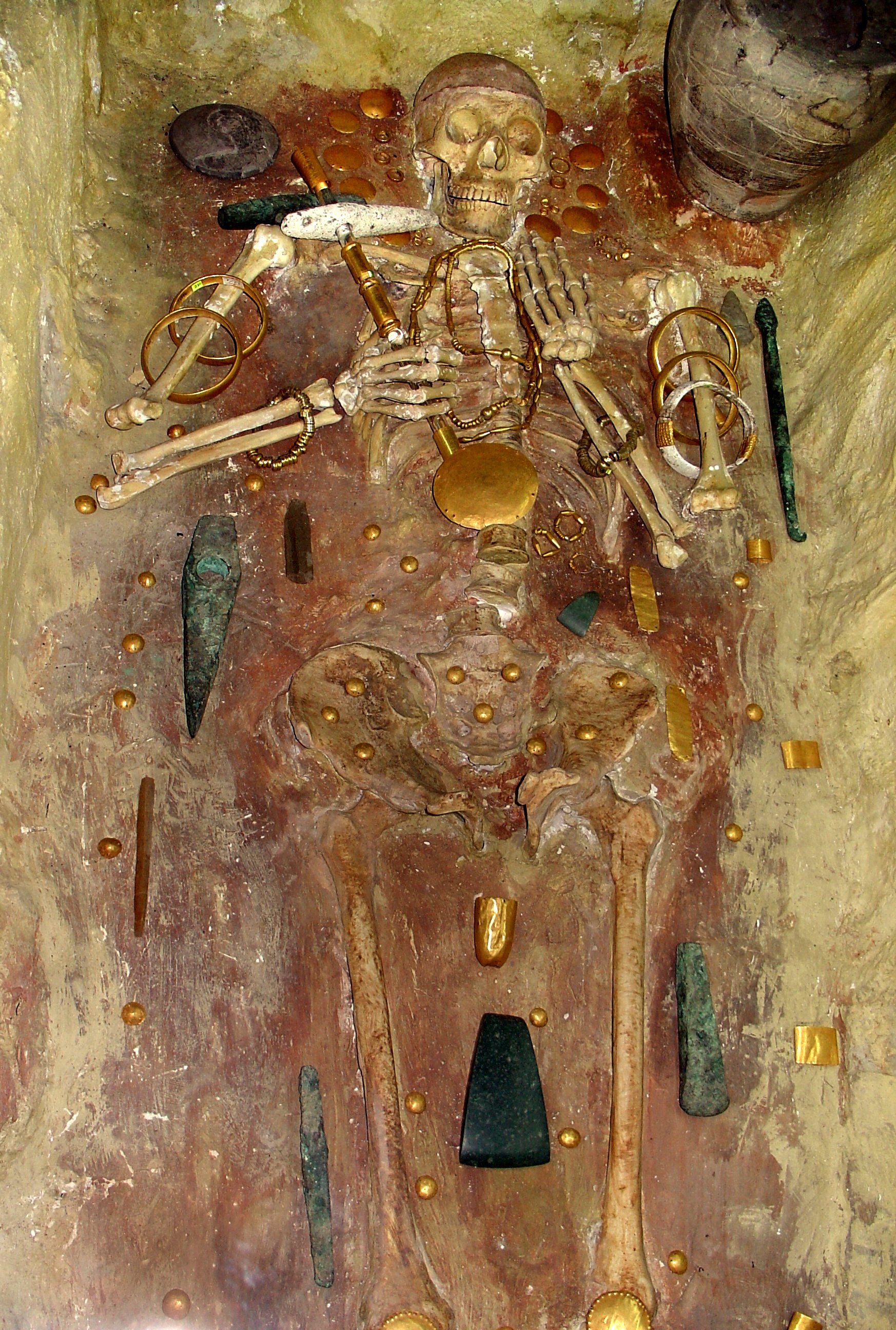
A skeletal burial form Varna (4600-4400 BC) with some of the world's oldest gold jewellery and copper artifacts, public domain
Copper in the Bible
The Bible is not only a collection of holy books, the source of faith for Jews and Christians but also an amazing source of knowledge about the ancient times. The very word copper appears in the Bible sixteen times – for comparison - gold is mentioned 359 times, silver in turn - eight times. Bronze, alloy of copper and tin, is quoted in the Bible as many as 98 times, whereas gunmetal eight times. In the Bible we can also find information about mines (2) and foundries and casting technology (26)
Where did the metal which kingdoms of that time obtained in order to gain raw material for making tools, weapon and other ornaments come from? Archaeological researches and thorough analysis of biblical texts let the issue study closer. One of the copper sources was biblical land called Edom located south – west from Israel. It was a country founded before creating the Jewish country by Esau, Jacob’s brother. In the 10-9th BC it was a considerable centre of copper extracting and metallurgy.
According to the Bible, copper mines were located in Wadi al-Araba Valley, being a part of the Jordan River extending south from the Dead Sea to the Gulf of Aqaba at the eastern end of the Red Sea (Job 28:2-4). Copper also occurred in the mountain of the Promised Land (Deuteronomy 8:9). Salomon made copper castings near Sukkot (1Kings 7:14-46; 2 Chronicles 4:1-18). Cooper mines were in Cyprus, additionally the Bible also mentions other places, from which this metal was imported Jawan, Tubal and Meszech (Ezekiel 27:13).
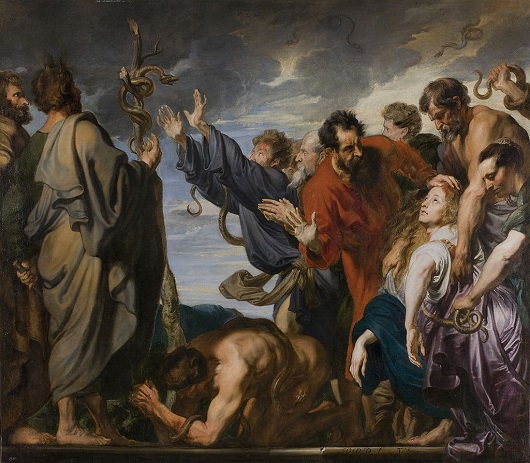
Moses and the copper snake painted by Antoon van Dyck (1599-1641), public domain

Reconstruction of the Salomon’s Temple with the bronze vessels in the foreground, public domain
Copper in Iliad and Odyssey
Iliad and Odyssey are not only masterpieces belonging to the canon of European literature but also they are an excellent sourced to study the usage of copper in ancient times. The individual passages of Homer’s song about Ilion are up to this day an evidence about the versatile usage of this metal by ancient Greek, Trojans and other nations entangled in the conflict several years ago.
Homer’s works not only presents warriors dressed in gunmetal but they also allow to learn the secrets of work of Greek artisans. It is worth looking at the description of Achilles's shield made by Hephaestus.
And on the fire he put stubborn bronze and tin and precious gold and silver; and thereafter he set on the anvil-block a great anvil, and took in one hand a massive hammer, and in the other took he the tongs
[478] First fashioned he a shield, great and sturdy, adorning it cunningly in every part, and round about it set a bright rim, threefold and glittering, and therefrom made fast a silver baldric. Five were the layers of the shield itself; and on it he wrought many curious devices with cunning skill. (…)
[606] Therein he set also the great might of the river Oceanus, around the uttermost rim of the strongly-wrought shield. But when he had wrought the shield, great and sturdy, then wrought he for him a corselet brighter than the blaze of fire, and he wrought for him a heavy helmet, fitted to his temples, a fair helm, richly-dight, and set thereon a crest of gold; and he wrought him greaves of pliant tin. But when the glorious god of the two strong arms had fashioned all the armour, he took and laid it before the mother of Achilles. And like a falcon she sprang down from snowy Olympus, bearing the flashing armour from Hephaestus.
Translation: https://www.theoi.com/Text/HomerIliad18.html
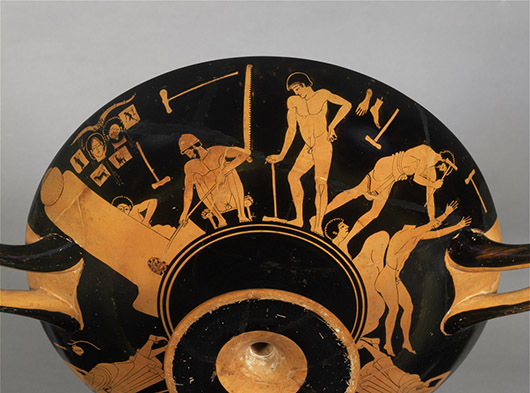
Greek foundry workshop, Greek pottery from the 5th century BC, public domain
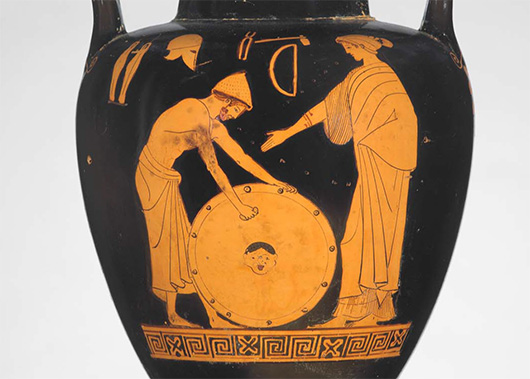
Hephaestus with shield of Achilles, Greek pottery from the 5th century BC, public domain
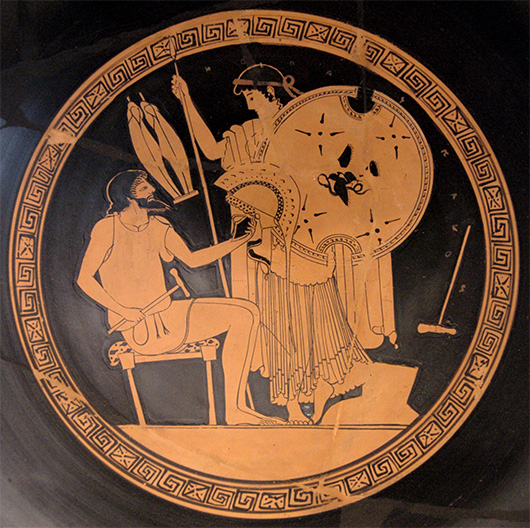
Hephaestus and Tethys, mother of Achilles, Greek pottery from the 5th century BC, public domain
Copper in medieval times
In the Middle Ages copper was no longer such a precious metal as it was in the previous centuries. Its extraction was mainly connected with the demand for silver, which was the basis of monetary economy in Europe from the 8th century.
In the period from 10th to 15th century several mining centres related to extraction of silver and copper can be distinguished. The earliest written sources inform us about the discovery of copper deposits on Rammelsberg hill, overlooking Goslar (Harz, Germany), being from the 10th century one of the imperial residence. Is has been estimated that until the end of the 14th century 140 000 tons of copper were extracted only from this particular deposit. A bit later copper started to be excavated in the proximity of Mansfeld (11th -12th century). In the 13th century there was a boom of mining at the territory of today’s Czech Republic including Kutna Hora. Silver from these deposits was used by the king Waclaw II to implement a monetary reform, introducing pennies in Prague. In Kutna Hora 2500 tons of silver and 100 000 tons of copper were extracted.
Outcrops in the proximity of Banska Bystrica, Banska Stiavnica and Kremnica (so-called Hungarian mining towns) were one of the most important copper deposits, from which copper was imported all over Europe. They were active from the 13th century, however, the flourishing of the local mines took place in the 15th and 16th century. It has been estimated that between 1495-1546 year the Fuggers company operating in the area of Banska Bystrica gained approx. 30 000 tons of copper and 115 tons of silver.
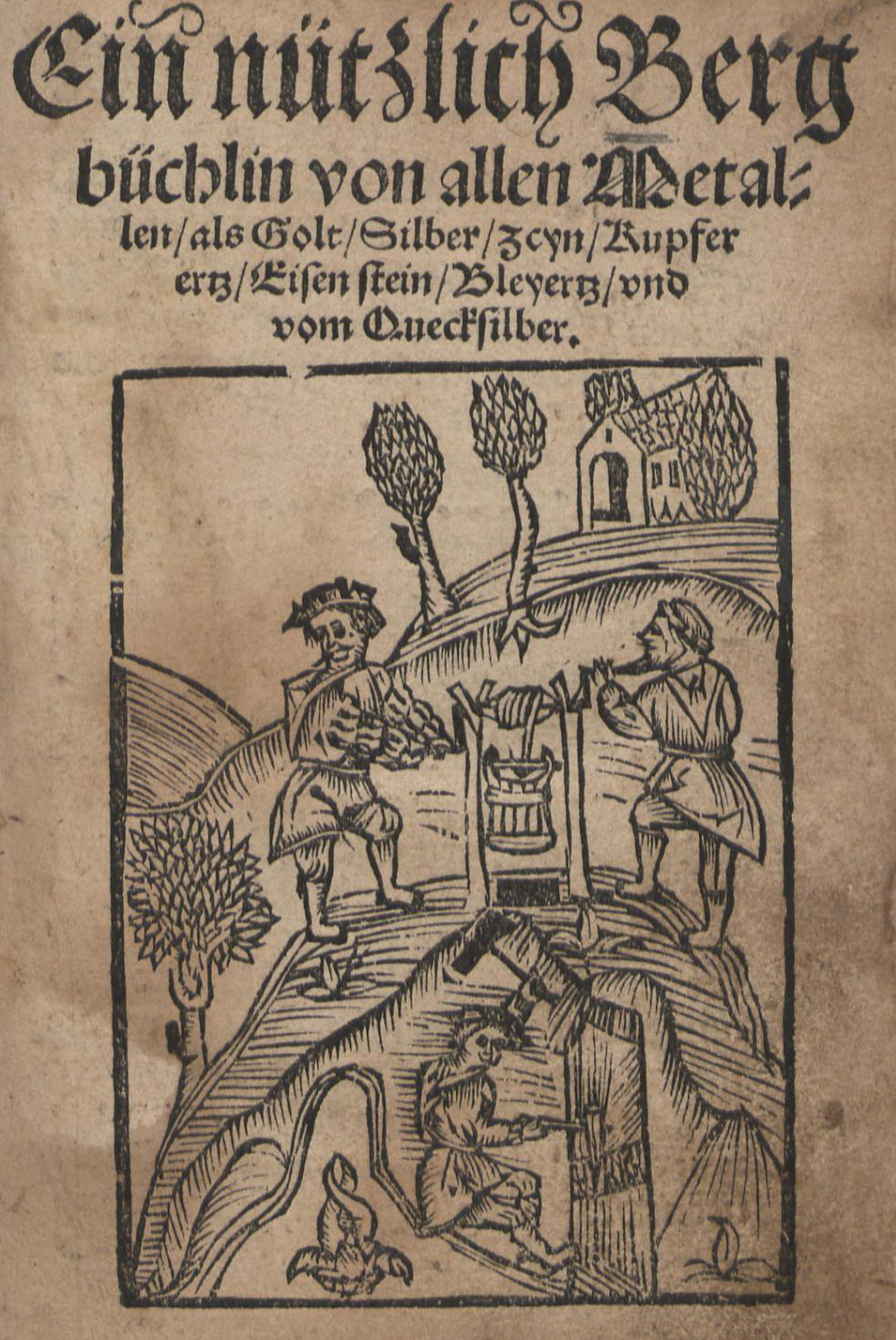
The miners from Ein nutzlich bergbuchleyn of Ulrich Rülein von Calw, end of 15th century, public domain

The miners from Kutna Hora (Bohemia), the end of the 15th century, public domain

The miners from Kutna Hora (Bohemia), the end of the 15th century, public domain

The miners from Kutna Hora (Bohemia), the end of the 15th century, public domain
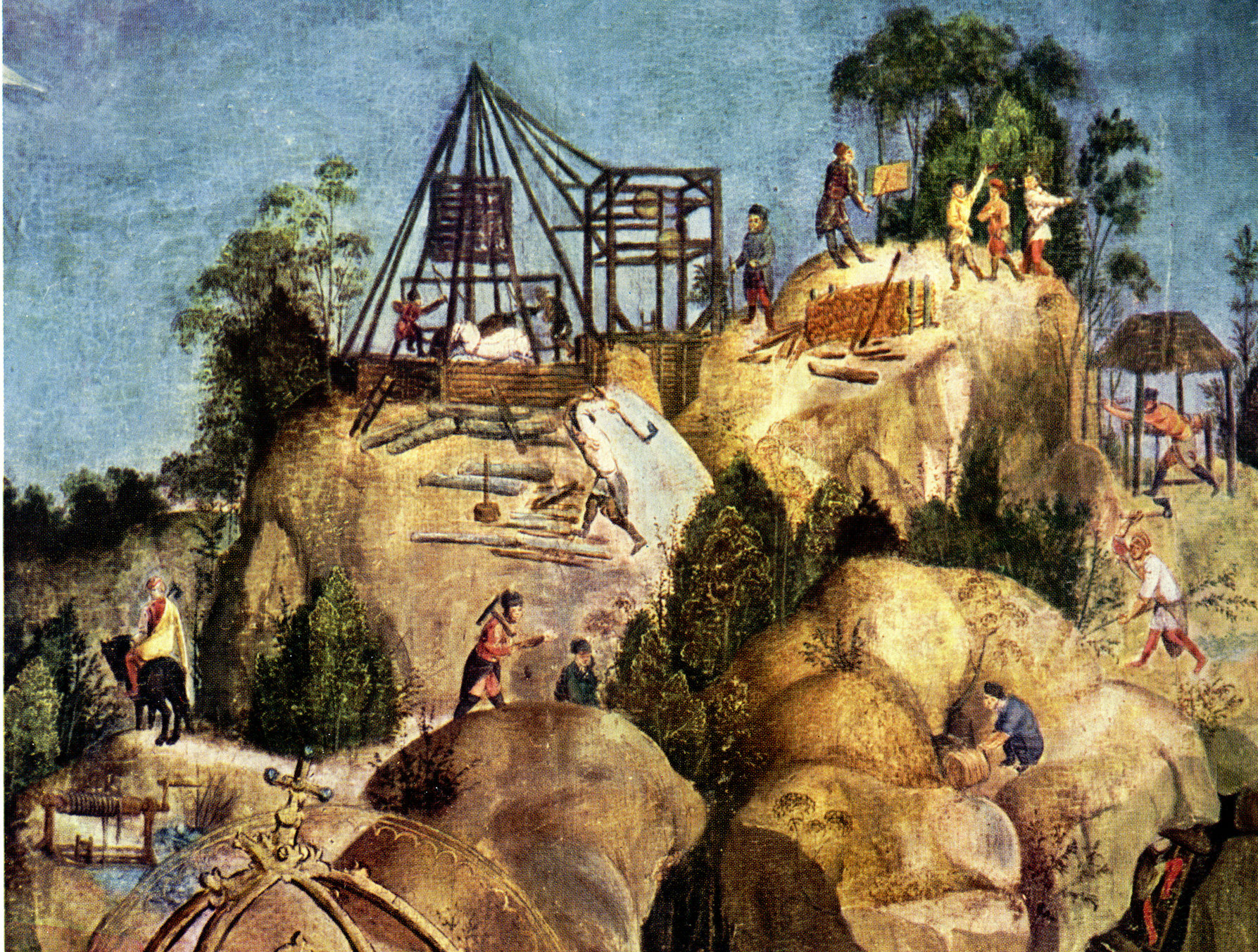
Miners and smelters from St. Anna Altar in Rožňavě (Slovakia), the beginning of the 16th century (1513)
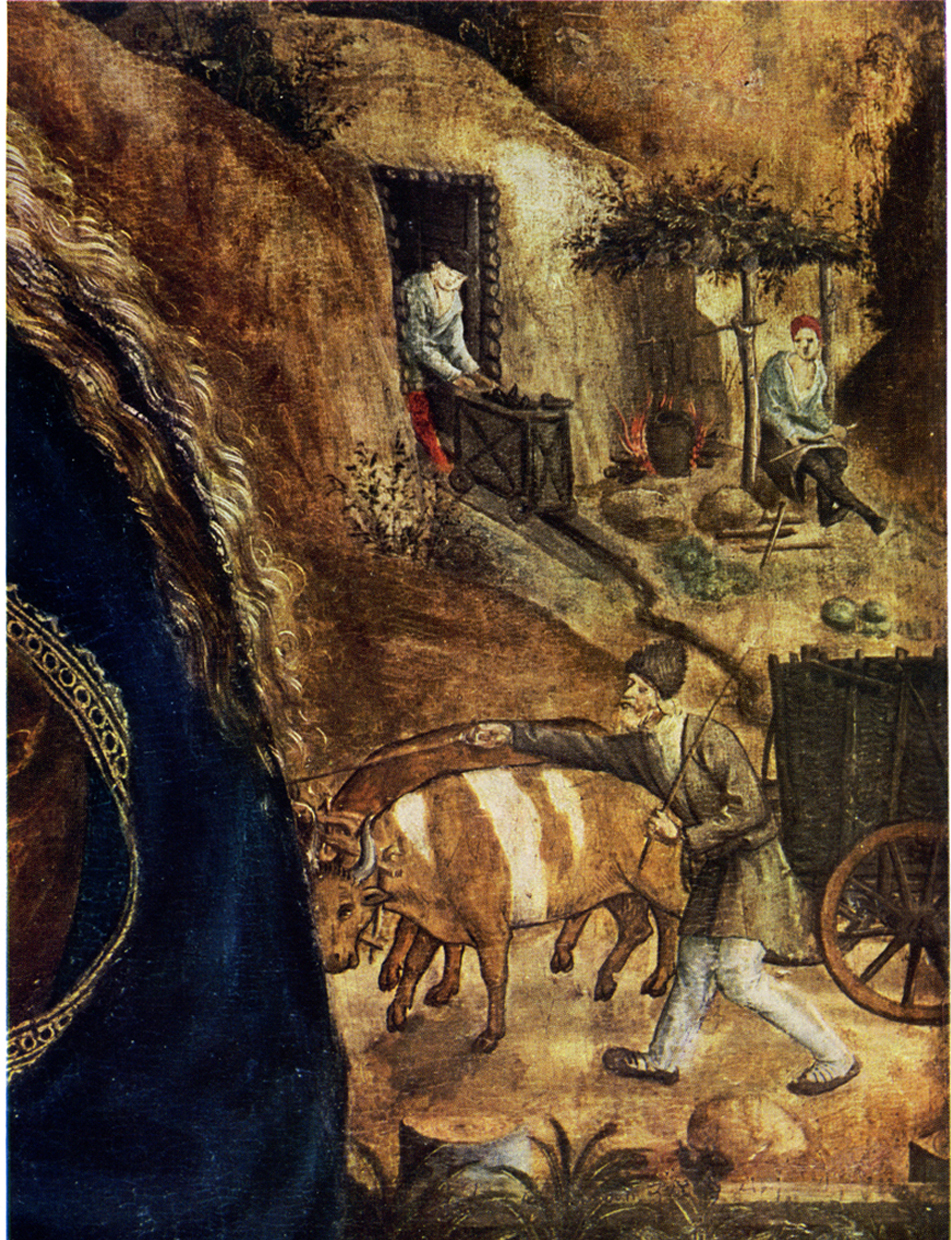
Miners and smelters from St. Anna Altar in Rožňavě (Slovakia), the beginning of the 16th century (1513)
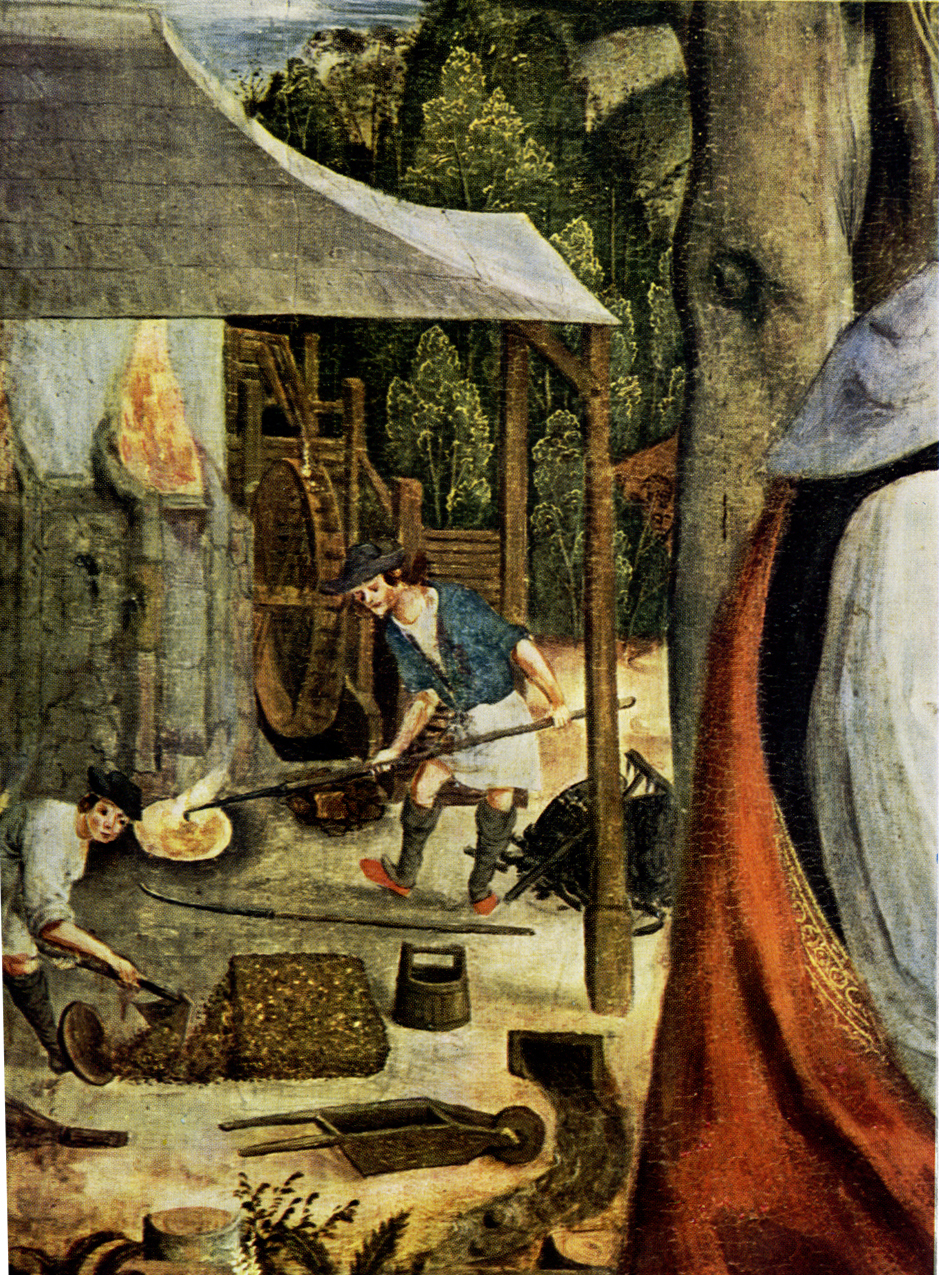
Miners and smelters from St. Anna Altar in Rožňavě (Slovakia), the beginning of the 16th century (1513)

Miners from the 17th century, Peace Church, Świdnica, Poland
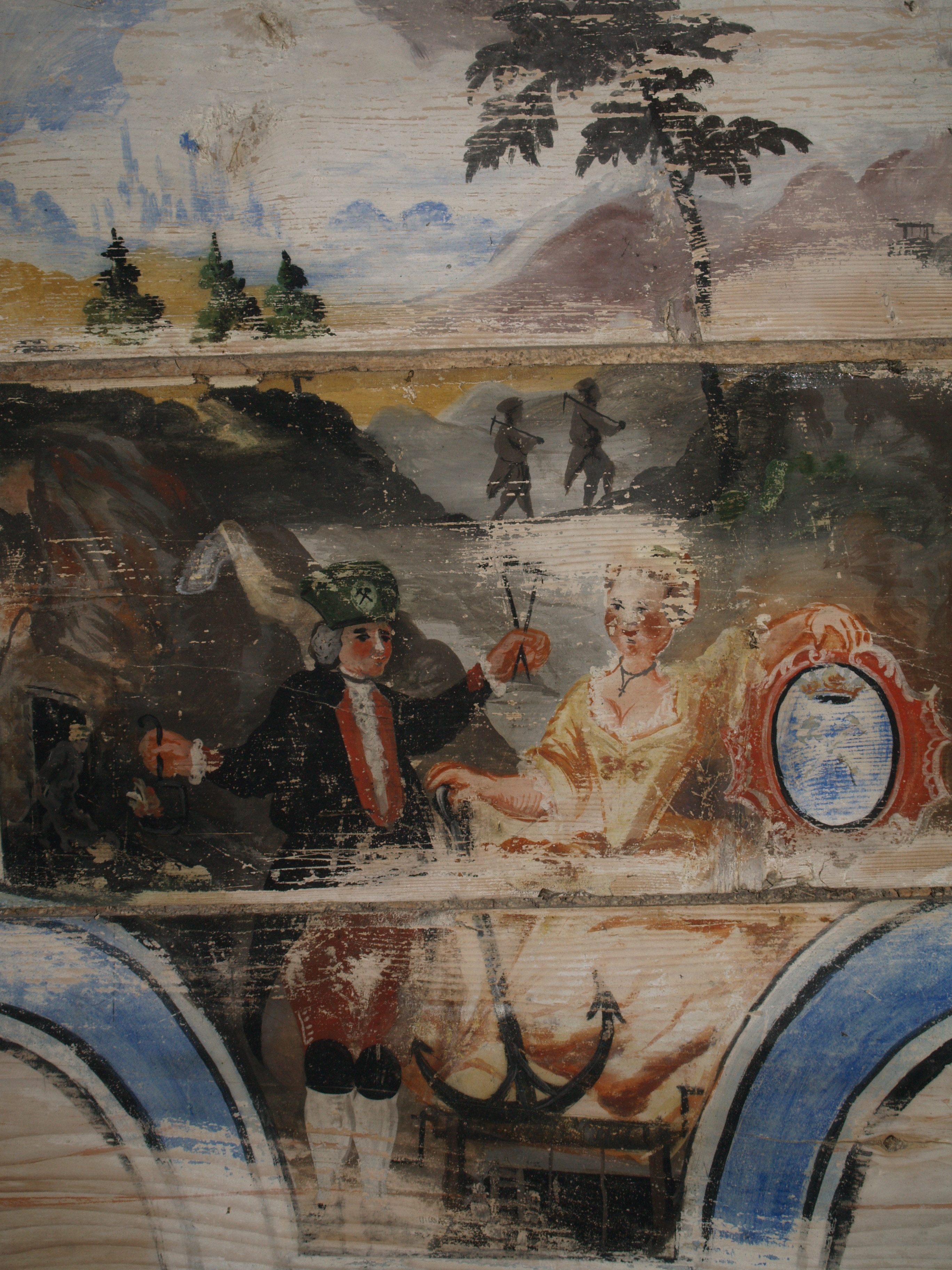
Miners from the 18th century, Mniszków, Lower Silesia, Poland, photo by T. Stolarczyk
Copper mines in the world
About thousands deposits of copper are known all over the world, today, in more than three hundred there are mining works.
Three main types of deposits can be distinguished on the basis of geological structure and the origin of its beginning. The most common and having currently the biggest economic importance are so called porphyry deposits (belonging to hydrothermal), in which copper is bound in sulphide present in intrusive igneous rocks. The most significant among those of this type can be found in North and South America including Chile (Chuquicamata, El Teniente), Peru (Cuajone, Toquepala) or Mexico (La in Caridad, Cananea).
Another type can be a stratified copper deposit, in which this metal is present in sedimentary rocks (e.g. shale, sandstone, dolomite, limestone) and is bound in the structure of silicate, carbonate and sulphite. The perfect examples of this type of deposits are these currently mined on the Fore-Sudetic monocline (Lubin, Polkowice, Rudna) as well as deposits from so called “Old Copper basin” (Leszczyna, Wilków, Iwiny, Lower Silesia, Poland). Mines located at the area of so called copperbelt Kongo – Zambia are also worth mentioning.
Copper ores of the least economic importance are represented by deposits of sulphite ores, which cupriferous sulphites have vein forms, occurring either as a massive nests in limestones or larger ore groups within volcanic rocks. In the group of this type of deposits there are plenty of former mining centres within Europe
The biggest open pit mine in the world is Escondida located in the Atacama Desert in the northern Chile. 5% of world copper is obtained there. The mine Kidd Creek, located 27 km north from Timmins in Ontario, Canada is one of the deepest copper mines in the world. Apart from copper, zinc, silver and indium is obtained there. The latter element is used to produce modern electronic products. So far the extraction of copper has already reached 2930 meters.
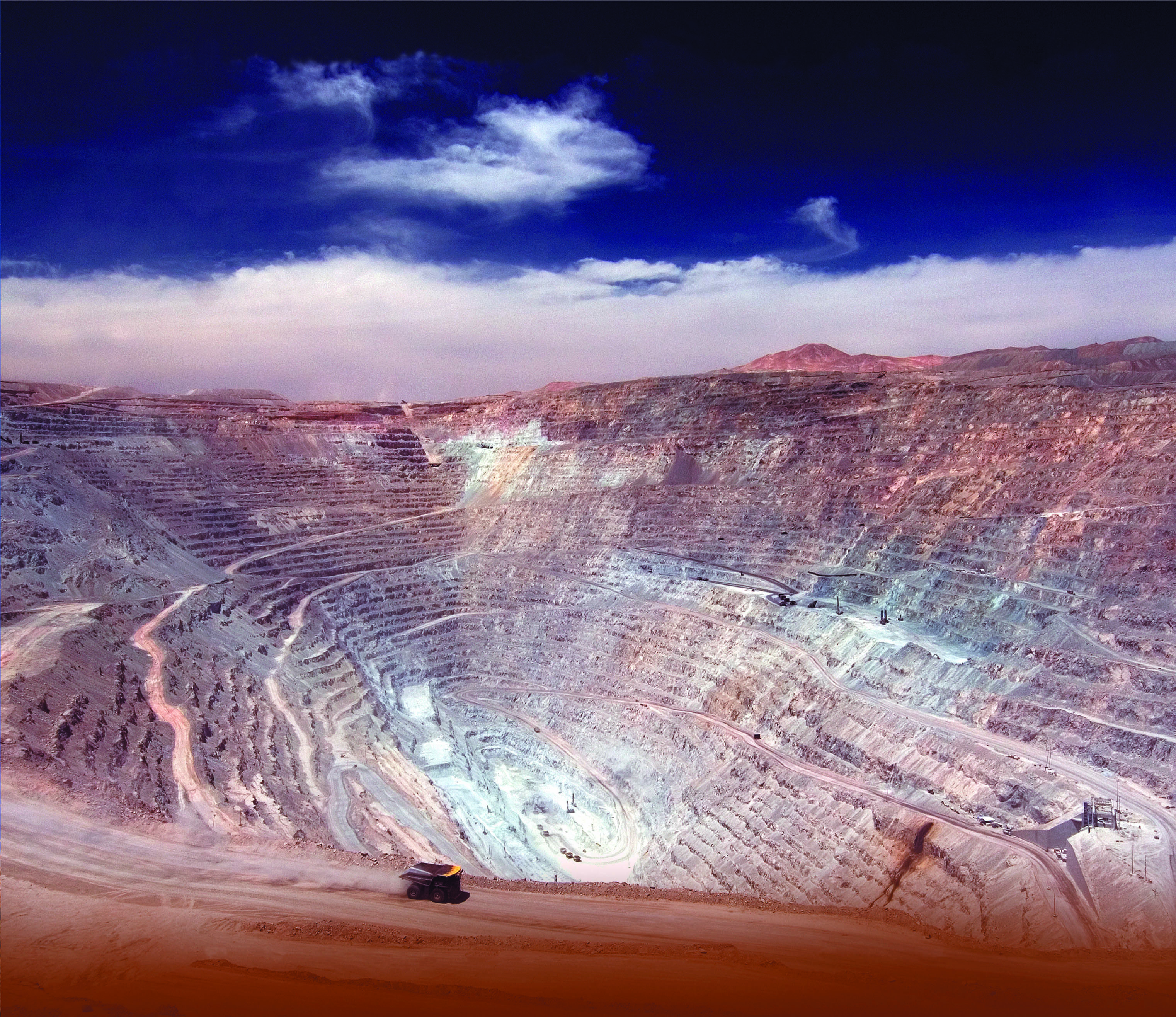
Chile, Chuquicamata Mine, copper open pit mine, Copper Museum Legnica
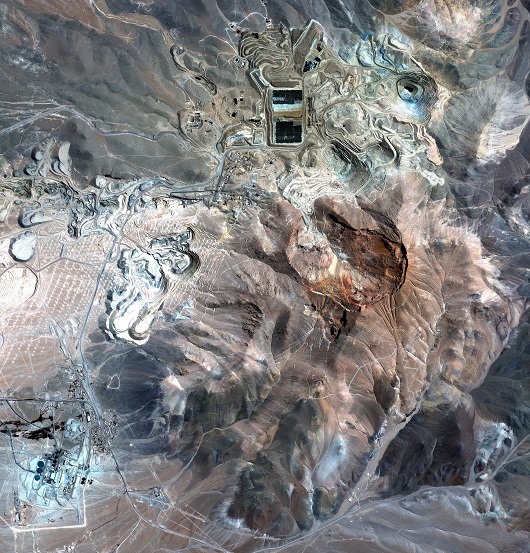
Chile, Salvador Mine, the landscape of the mine, Copper Museum Legnica
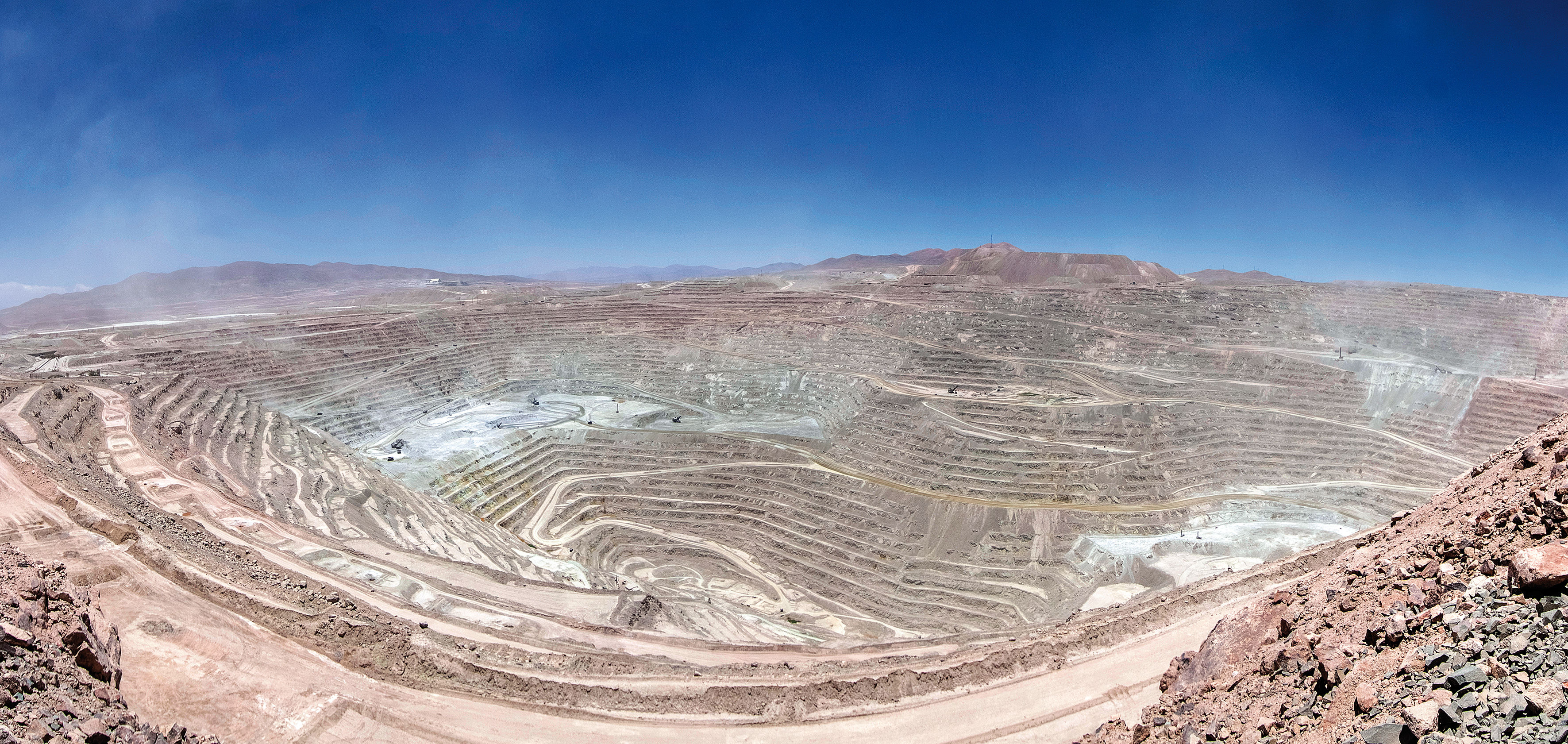
Chile, Escondida Mine, the biggest open pit copper mine in the world, according to www.bhp.com
